Chris Parkin takes the Ruger American in .300 Blackout out for a spin, and reports back to us in this detailed rifle test and review
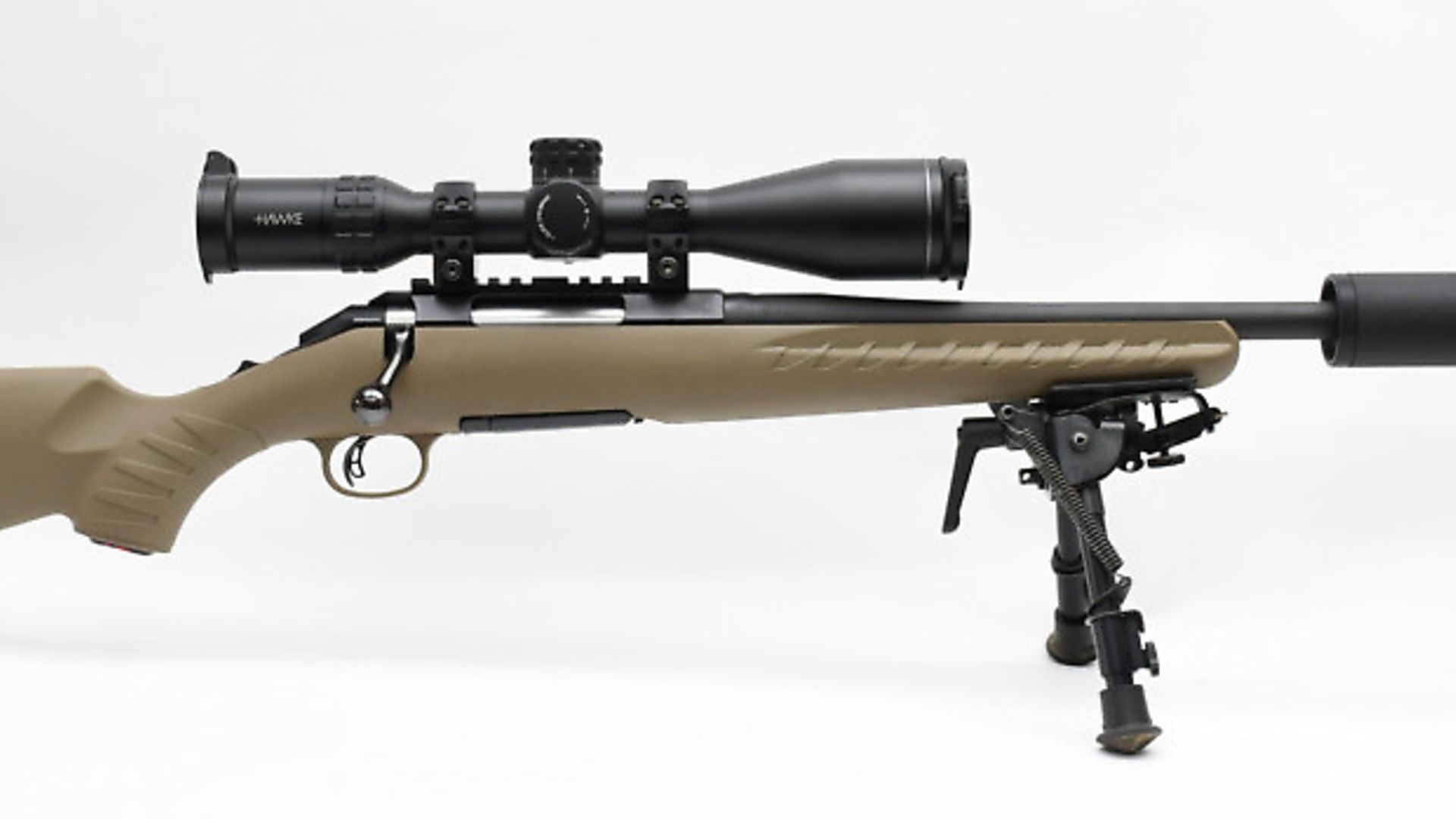 credit: Archant
credit: Archant
RUGER AMERICAN IN .300 BLACKOUT - brief overview
PROS: Straightforward design; 7” barrel twist; Great compact rifle handling character
CONS: A little short in the stock and I’m no fan of super soft recoil pads
VERDICT: I reviewed an “American” a few years ago in 223, re-reading my article has reminded me why I liked this fundamentally sound rifle which provides a great compromise between modern manufacturing technologies with no fundamental design drawbacks
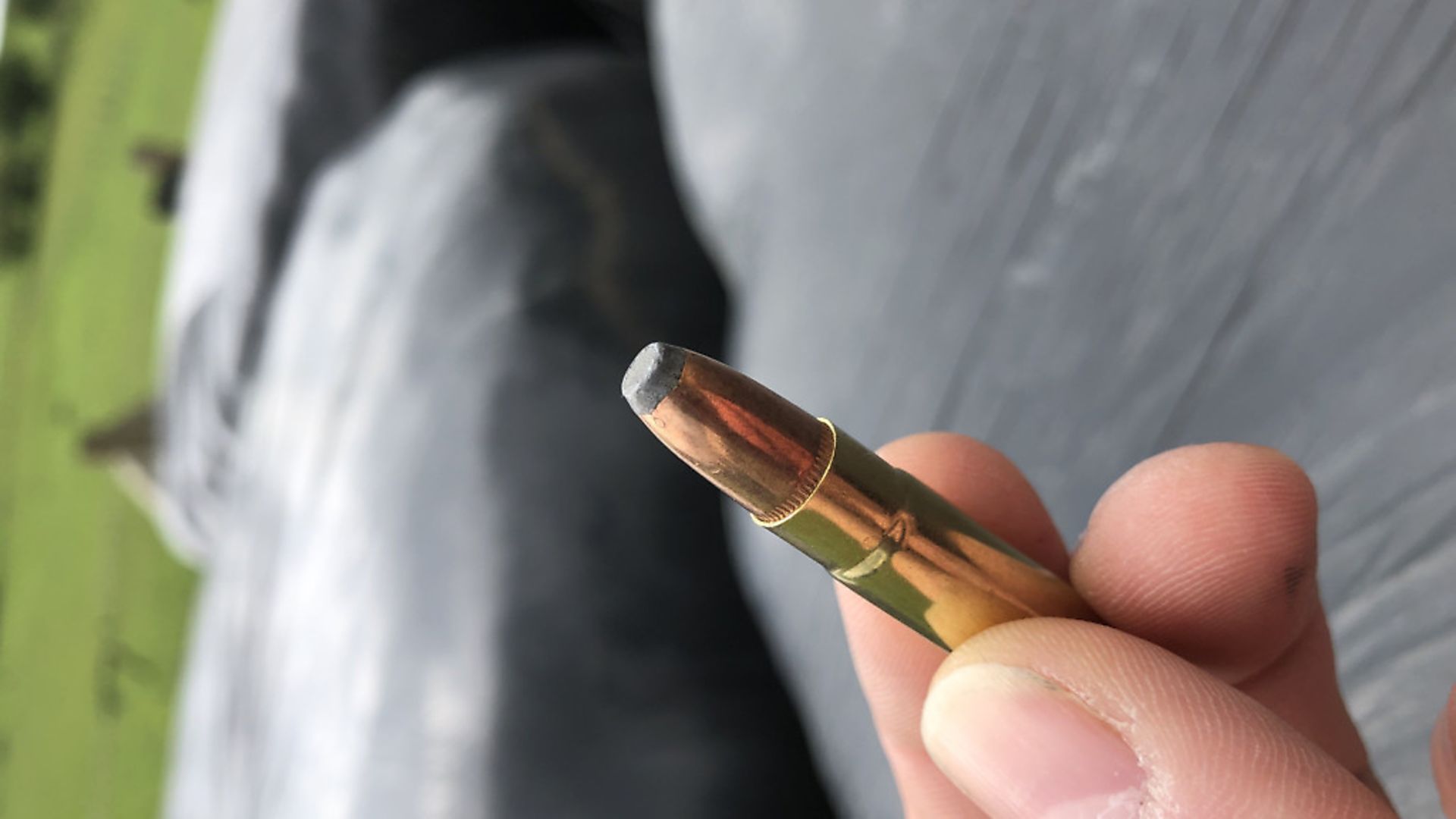 credit: Archant
credit: Archant
RUGER AMERICAN IN .300 BLACKOUT - detailed test & review
This rifle is of particular interest as it has been my first – and the magazine’s first – encounter with the .300 Blackout cartridge. This round derived from military desires and can closely replicate the legendry 7.62x39 Short, popularised in the AK47.
At 35mm, Blackout is closer in length to this than the 7.92x33 Kurtz that was the originator of compact yet potent WWII generation of smaller cartridges, packing battlefield punch into a diminutive higher volume format. As time has gone by, the desire to replicate the 5.56x45 NATO, using meatier .30 calibre bullets while fitting into AR-15 platforms, brought us to the 7.62x35 AAC Blackout, now finally becoming .300 Blackout or ‘BLK’ by SAAMI (Sporting Arms and Ammunition Manufacture Institute).
For sporting users, it will propel a .30 calibre bullet in the 110gr weight arena as high as 2500 fps, with lighter, more unusual bullets as high as 2800 fps, but what seems to appeal to civilian users is the ability to shoot heavy, high-ballistic coefficient bullets to quieter, more modest and even subsonic velocities. This gives the option of shooting, with decent crosswind ballistics, a 200gr bullet (high 0.5-0.6 BC) from a cartridge, easy to reload, with gentle recoil and low noise with about 10gr of powder and a small rifle primer at 2000 fps or lower.
I was supplied with 124gr high velocity, and 200gr subsonic FMJ ammunition from Sellier & Bellot by Edgar Brothers, with further reloading supplies from Vihtavouri, LEE, Starline, Sierra and Ramshot by Hannams Reloading and Henry Krank to further explore this cartridge and wow, what an interesting journey!
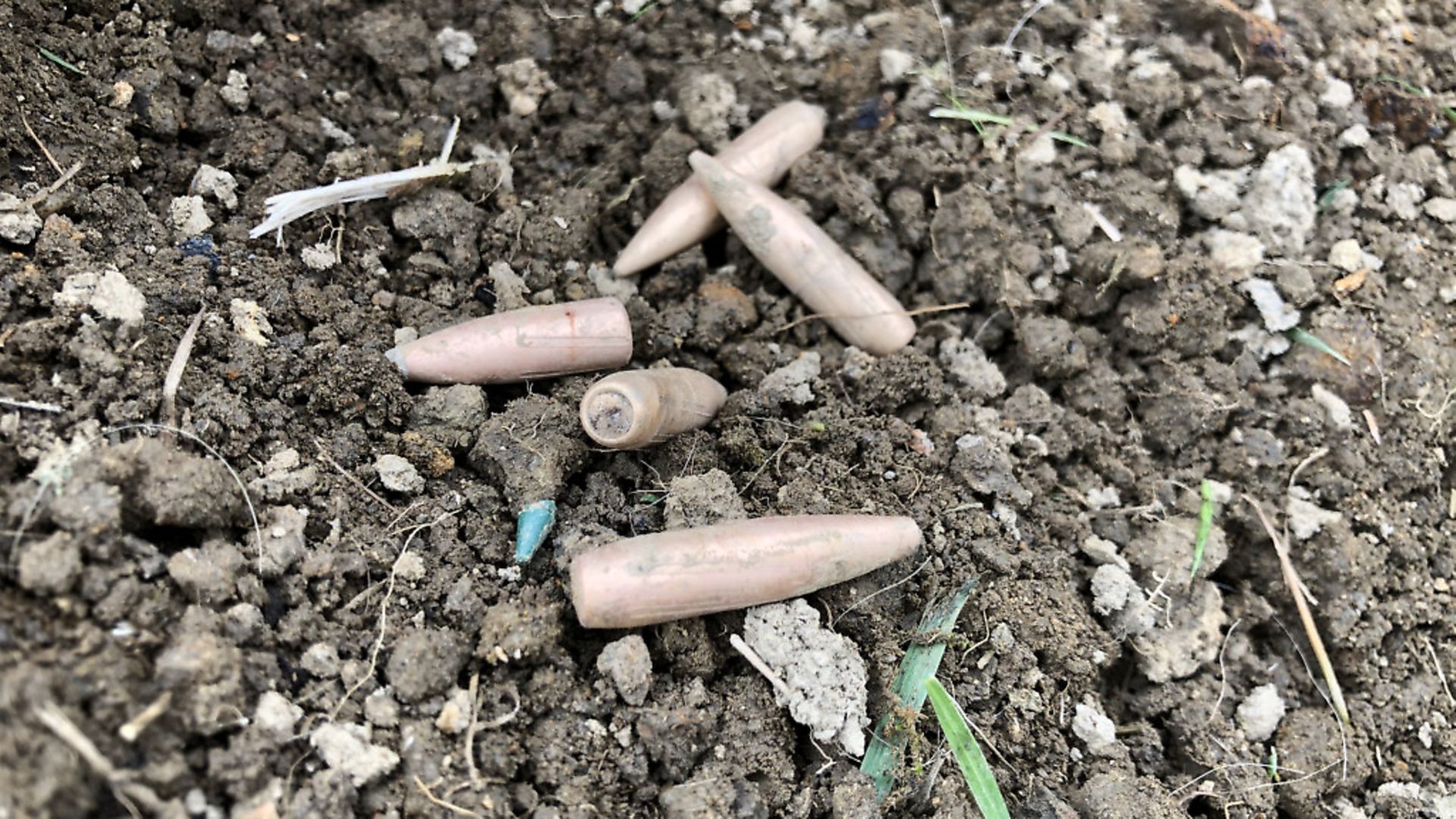 credit: Archant
credit: Archant
Fixtures and fittings
The Ruger’s 18mm diameter barrel is 16”/410mm long and threaded ½”x28 for a sound moderator or brake, the former of which was supplied to me by Wildcat with their latest Evolution moderator that suits the intended silence of the Blackout very well. A 1 in 7” twist on this .30 cal barrel, compared to the 10 or 12” commonly seen on .308, .30-06 or .300 Win Mag, is specifically designed to stabilise heavier, longer bullets, especially at lower velocities.
All steelwork shows a smooth matt black colour and the recessed crown is surrounded by neat threads for smooth application of accessories. A barrel nut is used for installation into the action, which has rebates machined into the underside profile to mate with aluminium V-shaped recoil lugs bonded into the stock inlet like a pair of cradles.
The action screws sit central to these for maximum grip with minimal stress to the stock. This shows a committed design and manufacture process from the ground up that I applaud them for, making a cheap gun into a good gun with modern machining and design innovation. Needless to say, when the action bolts were slackened, nothing rose out of the inlet which would indicate bending force had been applied to seat the two bedfellows together well, which is a big confidence boost.
Ruger’s Marksman adjustable trigger broke at 1,650gr on its factory setting. An inner safety blade guards the trigger, which breaks with no grittiness. It’s predictable and on a gun this price, more than pleasing. The adjuster screw is NOT threadlocked in place and a few spins anticlockwise had the trigger down to 1,400gr with no loss in feel.
The trigger mechanism hangs below the action, pinning a tang extension in place to support the rear-mounted safety: forward to fire with back to ‘safe’ without bolt lock. Three lugs surround its 16.4mm diameter shaft that run smoothly thanks to recessed lugs and a single slot for the rotation/bolt stop.
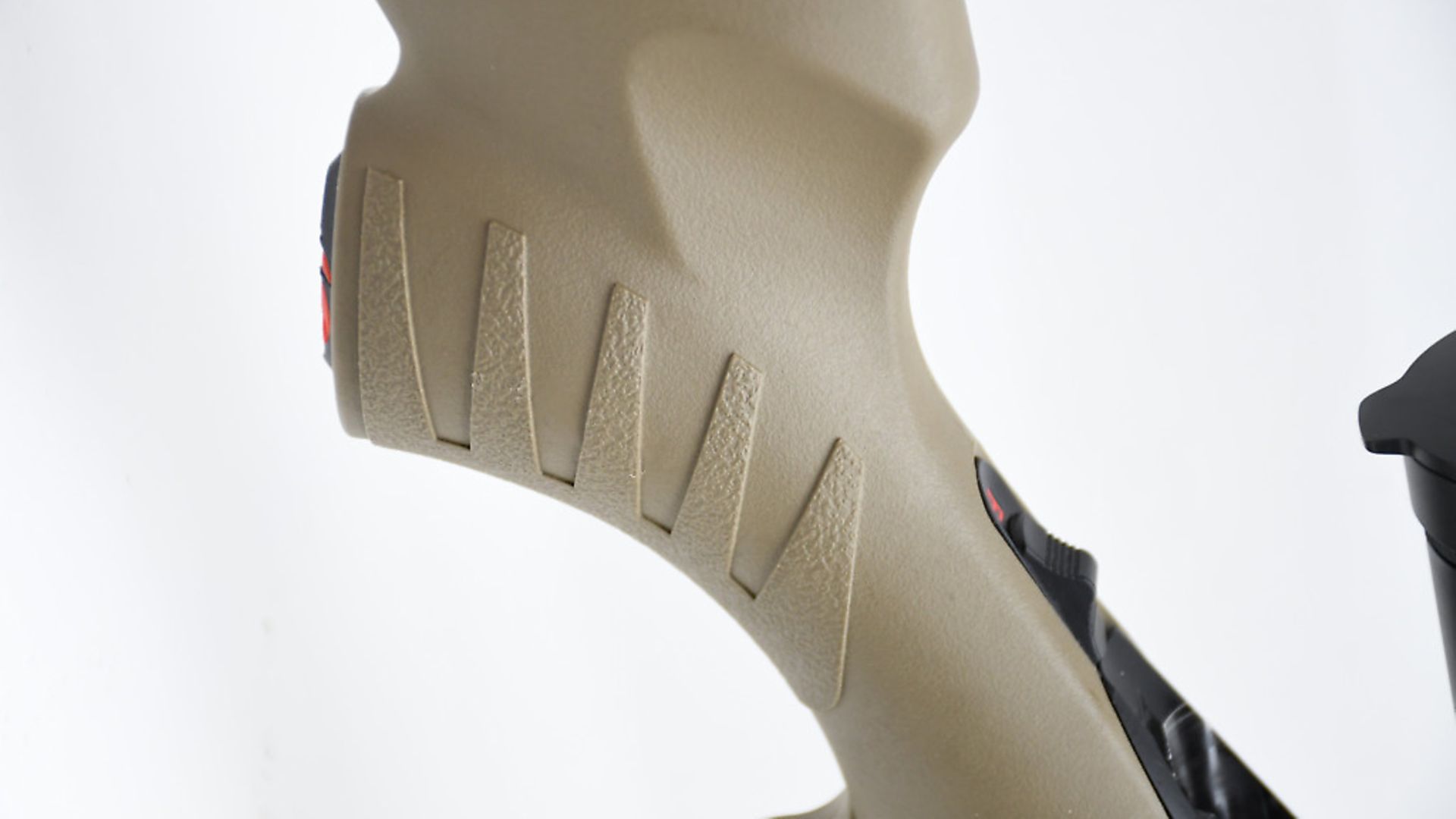 credit: Archant
credit: Archant
A really neat flush-fitting release lever on the left side of the rear action bridge only stands proud when the bolt is open. It has a 98.7mm stroke, which is a little longer than the .300 needs but its shroud remains close to the high slender cheekpiece of the stock and won’t interfere with your face or nose. The ball handle is a 13.4mm spherical shape standing proud of the stock for fast operation from its 70° opening angle.
It will easily clear any scope you are likely to mount and gives plenty of space for bulkier night vision and thermal kit you might consider using with a Blackout. Bolt operation is light and smooth with clean ammo feed (with conventional bullets), strong primary extraction with only slight force required to pass the lugs into their abutments when loading.
Clean metal-to-metal contact across the board with well-finished polished bright steel surfaces; I liked it a lot. At this point, I will also say that every metal and polymer surface on the gun has been machined or moulded to perfection without a single blemish in sight. It looked more than £700 should and certainly exhibited mechanical feel beyond that, more like £1,000 plus.
Five rounds fit into the polymer magazine with an extra in the chamber if you desire it. They all push feed from a single centre opening above the rotary follower. I rather liked the mags and would have no hesitation to continue with this format but the latest model shows an upgrade to a 10-round unit which is great if you want capacity.
I rather liked the slick operation and smooth profile of the flush fit on what is, to be fair, quite a neat looking rifle. The release catch is at the front and drops the unit into your palm without any fuss after the last round has been ejected by the sprung plunger recessed in the bolt face.
Ruger’s stock shows neat manufacturing details with an unassuming injection-moulded buff/coyote colour and a gentle texture to the externals with plenty of reinforced ribbing to support the gun’s fore-end when shot from a bipod. The trigger guard and bottom ‘metal’ is part of the moulding and it’s nice to see the mag’s catch and release springs are integral parts of the magazine, so the mag well is totally clear of extra bits and pieces.
Ruger have really thought this through to economise the manufacturing process but it could be neater. Finger grooves run along the fore-end which, like the grip, is broken up by external ribs for extra grip. There is enough space for a hand but caution is needed here – don’t get too greedy and squeeze the barrel. The straight hand grip suits smaller hands but isn’t unusable to those with larger fingers and reach to trigger is still acceptable.
Most importantly, length of pull has remained adequate, so this generally compact rifle shows fast handling without undue bulk, perfectly suited to the modest cartridge within. It is neutrally balanced, being slightly nose heavy with the addition of a moderator with very little recoil from the soft loaded ammo.
I’m no fan of spongy recoil pads, especially on a light recoiling rifle that require a firmer and more precise shoulder pressure for the best performance. Having a Weaver rail supplied with multiple scope mounting positions offers versatility for eye relief for 90-100mm.
 credit: Archant
credit: Archant
Ammo time
So, on to ammo. I ran the gun in with the 124gr S&B ammo before switching to the notably quieter 200gr FMJ and that was before the mod’s arrival. Once the mod got here, the lack of supersonic crack from the 200s was significant in terms of distant echo, which no longer exists; it was the dull thump of the gun firing with similarly blunt thud as bullets landed in the backstop, not something easily heard with supersonic high velocity guns.
The .30 cal bullets made quite a thwack passing through just paper and plywood. What was notable was the number of spent bullets I found on the backstop that had barely penetrated the damp soil or deformed at all, most showed just rifling marks. Five-shot groups averaged around 40-50mm at 100m, which I thought not bad for economy factory FMJ ammo, yet the most obvious feature was the massive POI shift swapping from 124s at 2000 fps to 200s at 980 fps, even over such a short range.
Switching to handloaded ammunition in Starline brass immediately brought the gun under tighter control and it’s always a bit unusual working powder charges ‘downward’ to close on subsonic speeds using various Sierra bullets from 150-200gr. Bearing in mind the 110-200+ .30 cal bullet weight choice and 1000-2000 fps speed window, this is a very unusual range to work in. It’s about what you want from one gun ballistically rather than the norm of discovering a ‘normal’ cartridge’s accuracy and velocity limits.
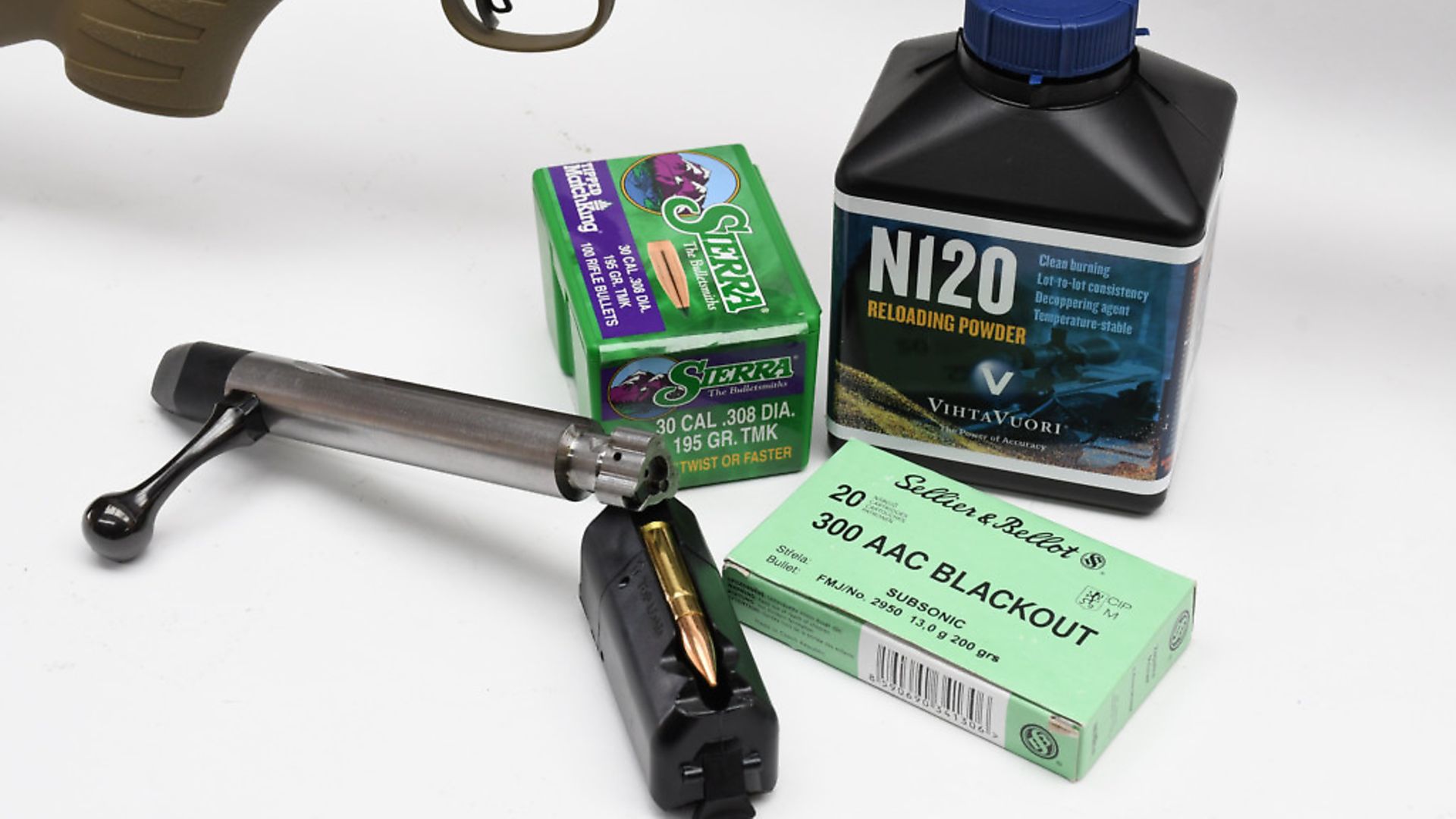 credit: Archant
credit: Archant
Subsonic Blackout has its limitations and ricochet risk from bullets that hardly deform at all is a consideration on all but purpose-built backstops! The TMKs were found sprinkled on the backstop after some 1500 fps shot strings that detached the green ballistic tip, but that was about it.
I swapped to lighter 150gr soft points which worked well with more deformation as velocities as low as 1200 fps but below that for subsonic performance, no expansion on a hard, muddy backstop from any ‘normal’ PSP or tipped offerings. Bullets designed for the older .30-30 rifles with thin jackets for low velocity expansion did expand but sadly suffered the purely mechanical factor of not feeding at all from the magazine due to their flat points and being so short in the tiny case, about the size of a 200gr bullet, but extremely fiddly to hand chamber.
After lots of experimentation, I settled on the 175gr TMK for the best performance across a speed range from 1050 to 1700 fps, with less than a 3gr powder charge variance above 10gr N120 starting baseline. This reflects the sensitivity of the smaller case, so when handloading, you need to be extremely consistent with charge weights (well below 0.1gr) as any variation was immediately noticeable on target.
That is probably where the factory ammo fails: lower cost, lower consistency. My testing was nowhere near exhaustive, but what I can sum up with is that the Blackout is a very technically interesting and creative cartridge that inspires. The most accurate 175gr loads performed consistently well out to 200m, but you will need to learn all about dialling and wind with the loopy trajectory.
At the end of the day, would I chase a Blackout purely for subsonic use hunting? I’m not really sure it is worth the effort because at close range, .22 rimfire will work quietly and safely on head shot foxes in urban areas where the larger heaver bullets will give more energy than is actually needed.
Bullet expansion is hard to ignore for reasons of safety and energy dissipation on the target, not just wound channel creation. Were I keeping the rifle, it would have been interesting to try the specific bullets Hornady are making for this exact purpose, but for now, I feel it is still a small step away from being truly useful in the UK.
The Ruger impressed me – it’s a great rifle that embodies the term modesty: yes, the recoil pad is a bit squidgy with short length of pull but not an insurmountable issue on a rifle with core capability at low cost. I can see a great future for the Ruger American which, combined with the Blackout, made for a very enjoyable test project. I would love to continue it because I don’t want to put the Blackout down! It’s a fascinating cartridge!
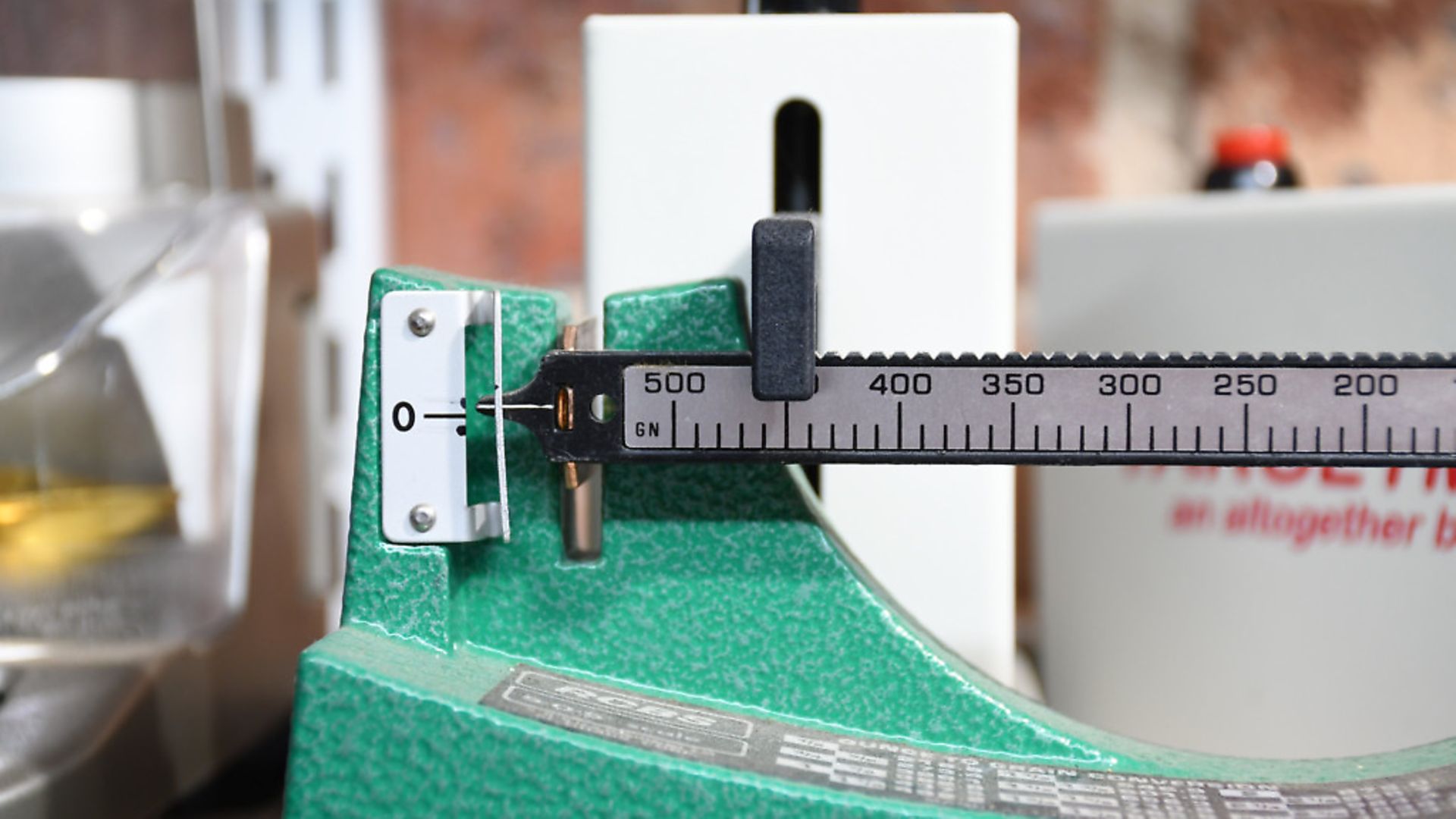 credit: Archant
credit: Archant
RUGER AMERICAN IN .300 BLACKOUT - TECH SPECS
Overall length/eight: 36.25”/920mm / 6.1lbs/2.75kg
Magazine capacity: Detachable 5+1 (New model will be 10+1)
Trigger Single stage: 3lb pull, adjustable to 5lbs
Barrel length: 16”/410mm
Calibres available: 300 Blackout
Metal Finish: Matt Blacked Steel
Stock Material: Buff/Coyote Injection Moulded
SightsWeaver rail included for scope fitting.
 credit: Archant
credit: Archant
RRP: Ruger American “Ranch” in 300 Blackout £700
CONTACT
Viking Arms 01423 780810
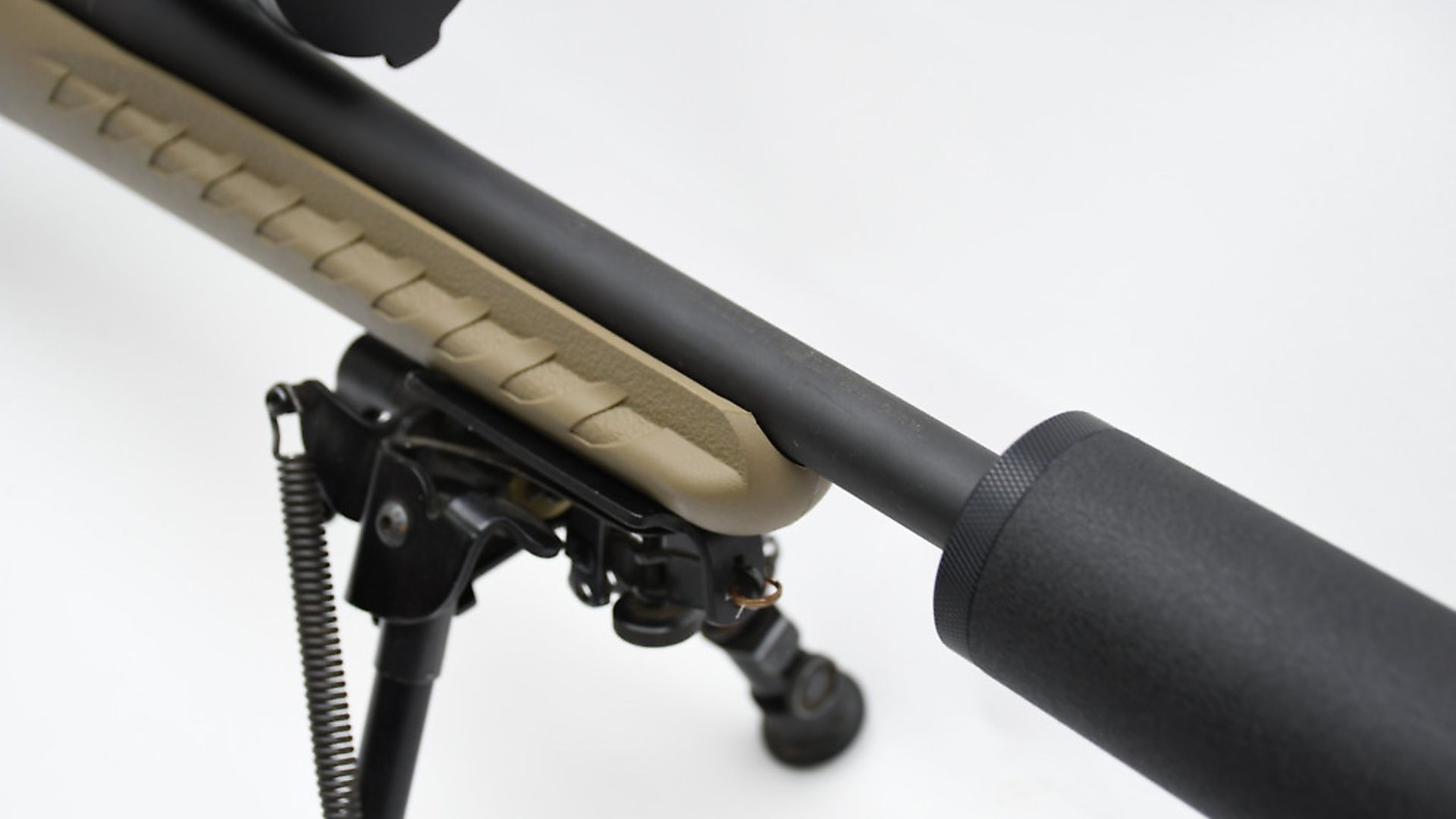 credit: Archant
credit: Archant
ALSO USED
Sellier & Bellot Ammunition, www.edgarbrothers.com, 01624613177
Vihtavouri Powder and Lee reloading dies supplied by, www.hannamsreloading.com 01977 681639
Sierra Bullets, Ramshot Powder, www.henrykrank.com, 0113 256 9163
Schmidt & Bender 5-25 PMII, Schmidt & Bender (UK) Ltd. www.schmidt-bender.com 07719 567916
wildcatmoderators.co.uk 01905 797060, Evolution Model
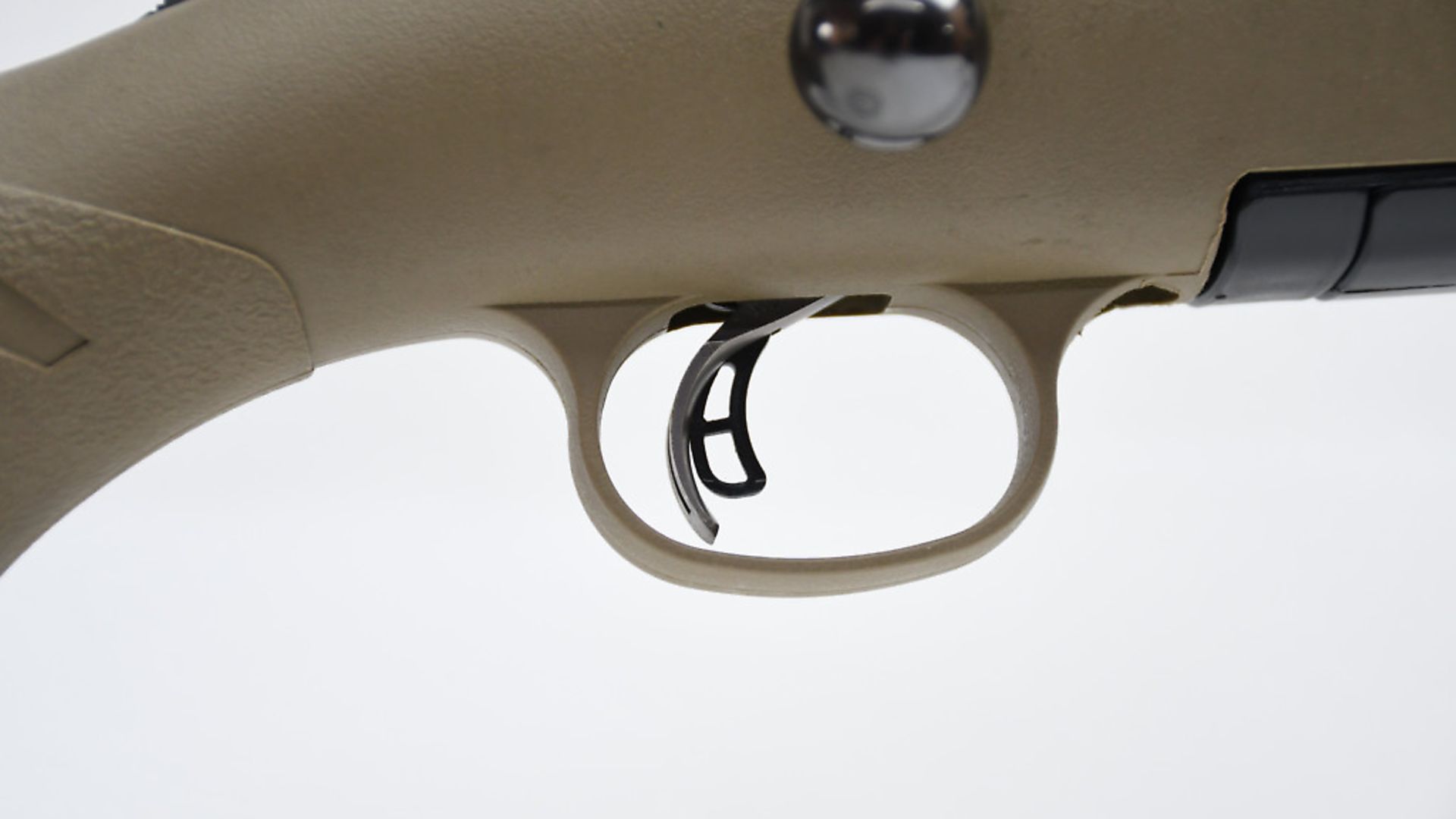 credit: Archant
credit: Archant
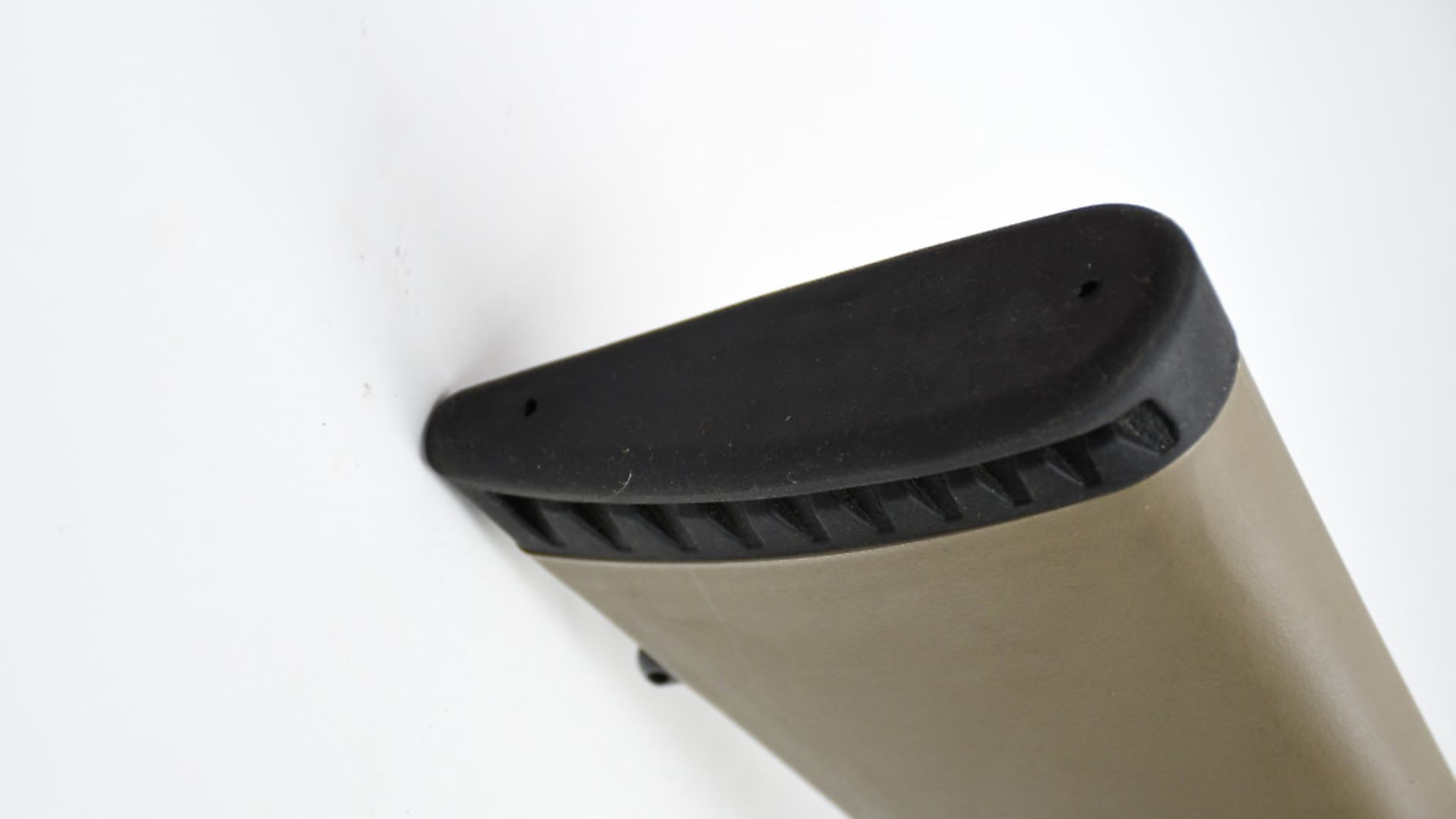 credit: Archant
credit: Archant
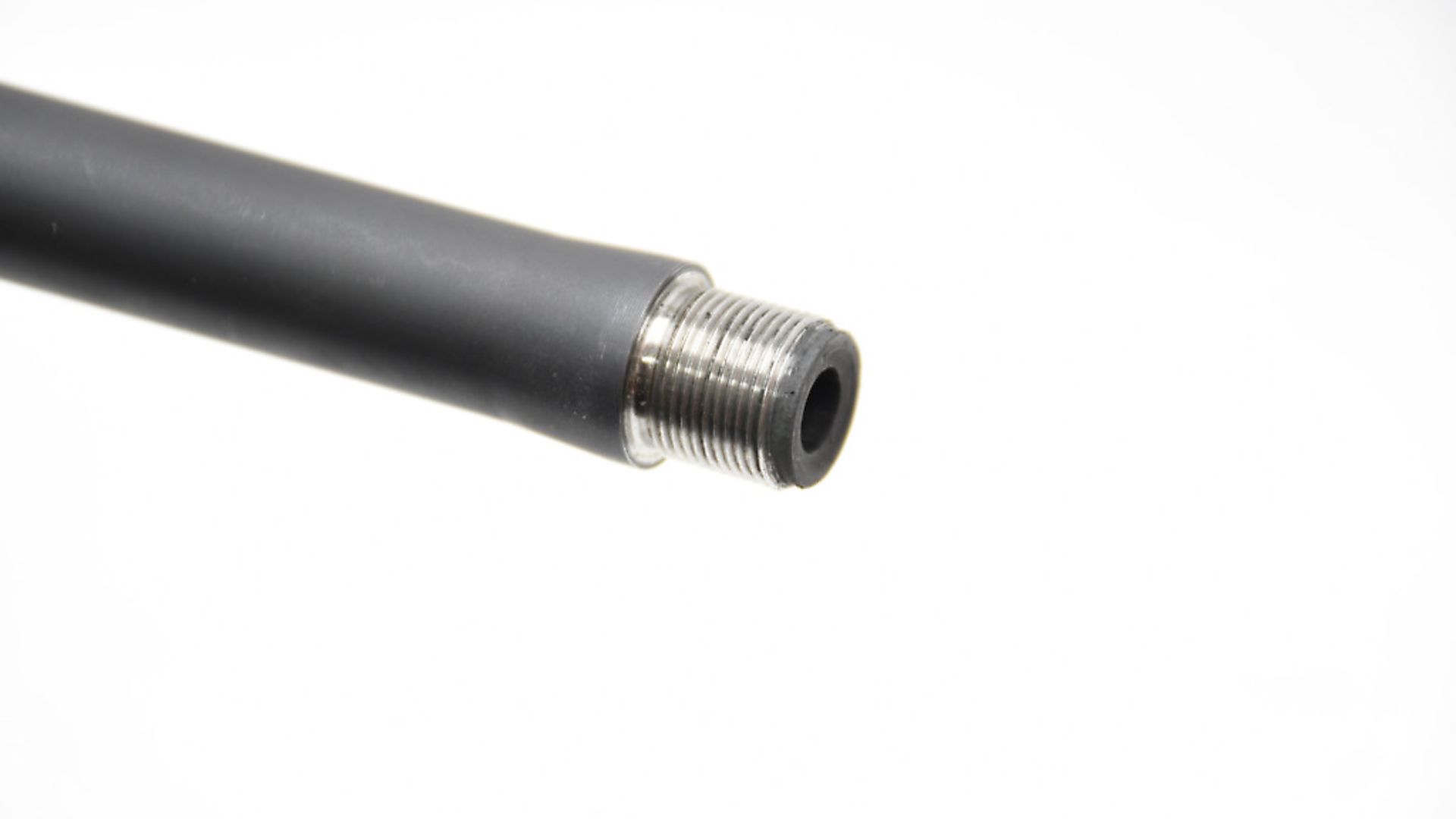 credit: Archant
credit: Archant